
As the chill of winter begins to thaw and the temperatures slowly rise, Wisconsinites can start to feel the excitement of spring in the air. While the weather can be unpredictable in the Badger State, having a reliable spring lawn care calendar for Wisconsin can help ensure a beautiful and healthy lawn throughout the season.
From fertilizing to weeding, mowing to aerating, we’ll walk you through spring lawn care tips that will set your lawn up for success. So grab your gardening gloves and get ready to make the most of spring!
March
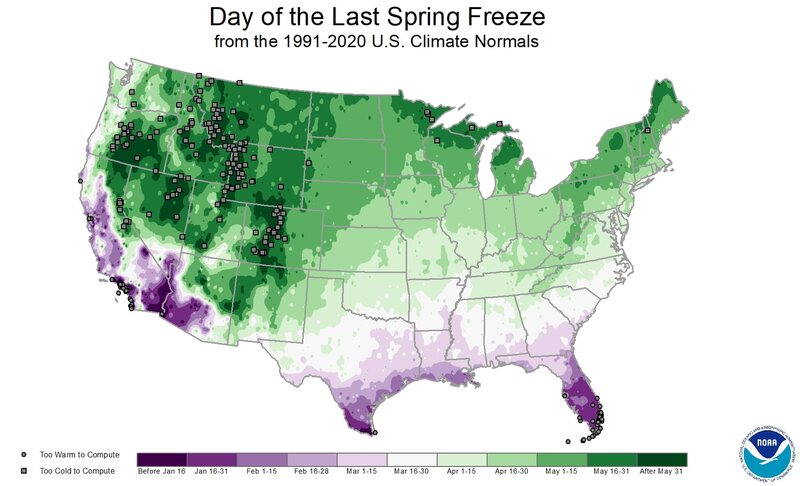
While there may not be a lot of visible growth in your lawn, and snowfall happening until May some years, March is the perfect time to start prepping for the warmer months ahead.
Get the Lawn Mower Ready
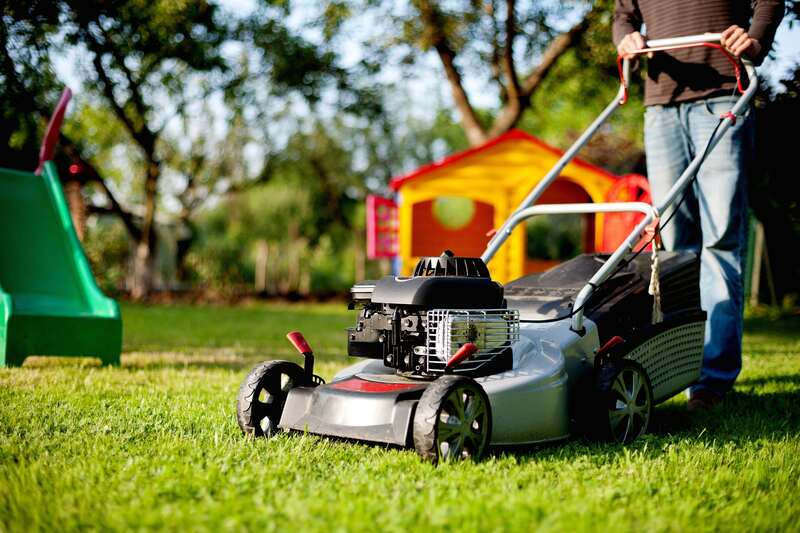
Preparing your lawn mower for spring is essential to any lawn care routine. After months of winter hibernation, your mower needs a little TLC to get it running smoothly again. Fortunately, it doesn’t have to be complicated. Here are some simple steps to follow:
- Clean the mower with a pressure washer or a rag.
- Replace the spark plug (if you didn’t in the fall)
- Check the oil.
- Clean the air filter.
- Sharpen the mower blades.
- Lubricate the spark plug and other moving parts.
- Fill up the gas tank.
April
With the probability of snow dwindling and temperatures rising, April is the perfect time to start tending to your lawn. This is when you can start mowing, doing weed control, and overseeding your lawn to help it grow strong and healthy for the rest of the year.
Clean Up Your Yard
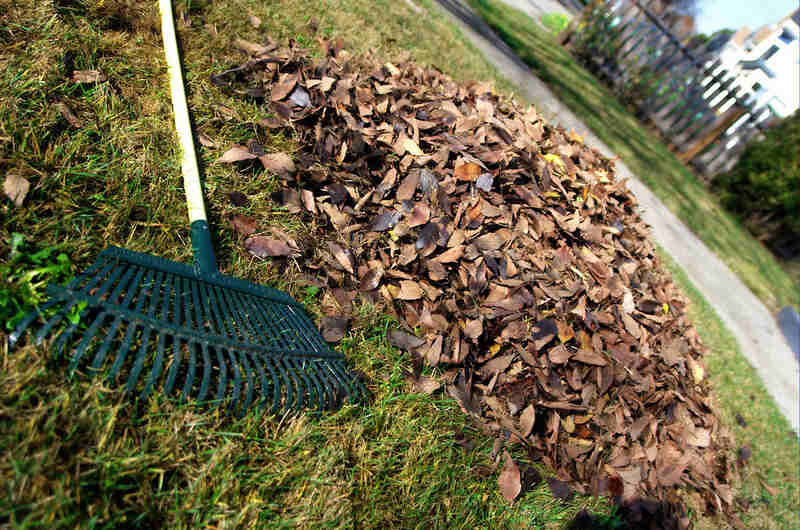
After a long winter, it’s common to find that your yard needs some serious clean-up. With the snow finally melting, it’s time to get to work raking leaves, sticks, and other debris accumulated over the past few months. You can also hire a leaf removal service.
- Rake leaves: Raking up any leaves left over from the fall is essential for a couple of reasons. First, it helps to prevent mold and fungus growth on your lawn. Second, it allows your lawn to breathe and absorb much-needed sunlight and nutrients.
- Remove sticks and branches: During winter storms, branches and sticks can fall and accumulate in your yard. These can be hazardous for people and lawn equipment, so remove them before mowing your lawn.
- Clean up debris: Other debris, such as trash, rocks, and toys, can also accumulate during winter. Make sure to pick up any loose items to prevent damage to your lawn and lawn equipment.
Pro Tip: Snow mold is a type of fungus that can develop in cold, wet environments, such as during winter months when snow is on the ground. By raking your lawn, you can help circulate air and sunlight, which can help to get rid of snow mold.
Overseed Bare Spots
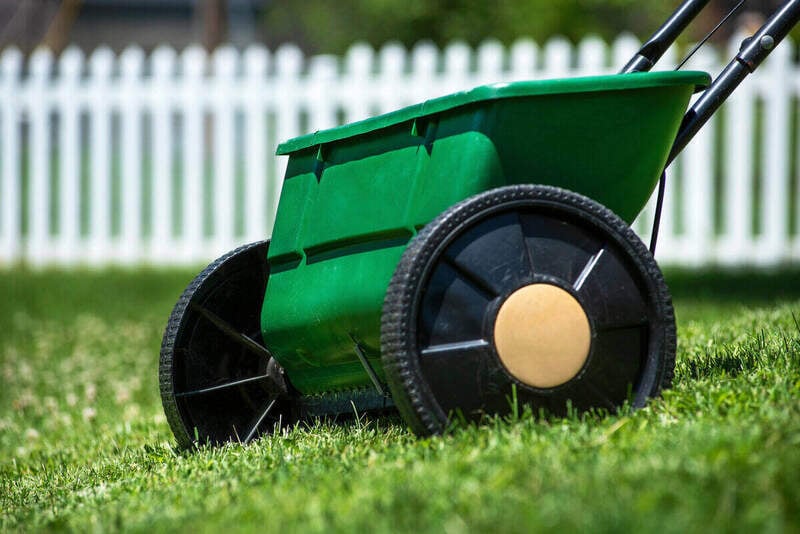
Overseeding involves spreading grass seed over bare or thin spots in your lawn, helping to fill in any gaps and thicken your lawn.
While the best time to overseed your lawn is in the fall because the grass seeds won’t have weeds to compete with, if your lawn has suffered damage over the winter, overseeding in the spring can be a great way to revive it. Follow these steps:
- Remove leaves, grass clippings, twigs, and debris.
- Add enriched topsoil to the areas you plan on overseeding.
- Choose the same or another cool-season grass type.
- Spread the grass seeds with a fertilizer spreader.
- Water your lawn.
- Avoid walking over the area.
Apply Pre-Emergent Herbicides
Performing weed control on your lawn is integral to maintaining a healthy and attractive lawn, and spring is the perfect time for that. By applying pre-emergent herbicides in April or May, you can target the weed seeds that have been dormant over the winter months, like crabgrass, and prevent them from sprouting as the weather warms up.
The best time to apply pre-emergent herbicides is when soil temperatures are between 50 and 55 degrees. This is typically between April 20th and 28th in Wisconsin but will vary depending on the region.
Pro Tip: If you prefer an organic approach to weed control, an alternative to pre-emergent herbicides is corn gluten meal. Apply it to your lawn at a rate of 20 pounds per 1,000 square feet, water it afterward, and let it dry out for a few days.
Note: If, even with herbicides, some weeds manage to sprout, you can hand-pull them throughout the season. Just make sure you remove their entire root system too.
Mowing
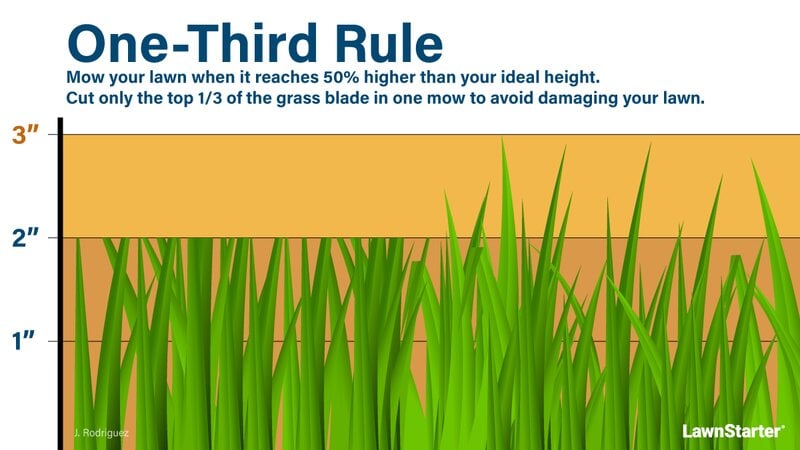
Mowing your lawn is an essential part of maintaining its health and appearance, and April is a great time to start. If you followed our tips for getting your lawn mower ready in March, then you’re all set to start mowing your grass once it reaches a height of around 3 inches.
Remember never to cut more than one-third of the grass blade at a time. This helps prevent damage to the grass and encourages healthy growth. Additionally, keep your mower blades sharp to ensure a clean cut and avoid tearing the grass.
In Wisconsin, keeping an eye on the forecast before mowing your lawn is a good idea. Also, avoid mowing when the grass is wet, as this can lead to clumping and uneven cutting.
The table below shows the recommended grass height for the most common grass types in Wisconsin:
| Grass Type | Mowing Height (in inches) |
| Kentucky bluegrass | 2.5 – 3.5 |
| Perennial ryegrass | 1.5 – 2.5 |
| Tall fescue | 2 |
| Fine fescues | 2.5 – 4.0 |
Water Accordingly
You might be tempted to break out your hose and start watering soon after the snow melts, but it’s best to wait until your lawn really needs it. The days begin to get longer, and the outside temperatures start to increase. This time is when your grass starts to wake up from winter dormancy and grow actively.
Grass starts to dry out as soon as night frost subsides, around April or May. Once your lawn begins to dry out, it’s time to assess the rain your yard receives. Grass needs around 1-1.5 inches of water each week, including rainwater. So, if your lawn gets enough rainwater, don’t bother lugging out the hose.
May
May is a busy and vital month for lawn care in Wisconsin. With warmer temperatures and longer days, May is the perfect time to perform important tasks to keep your lawn healthy and vibrant throughout the summer.
Grub Control
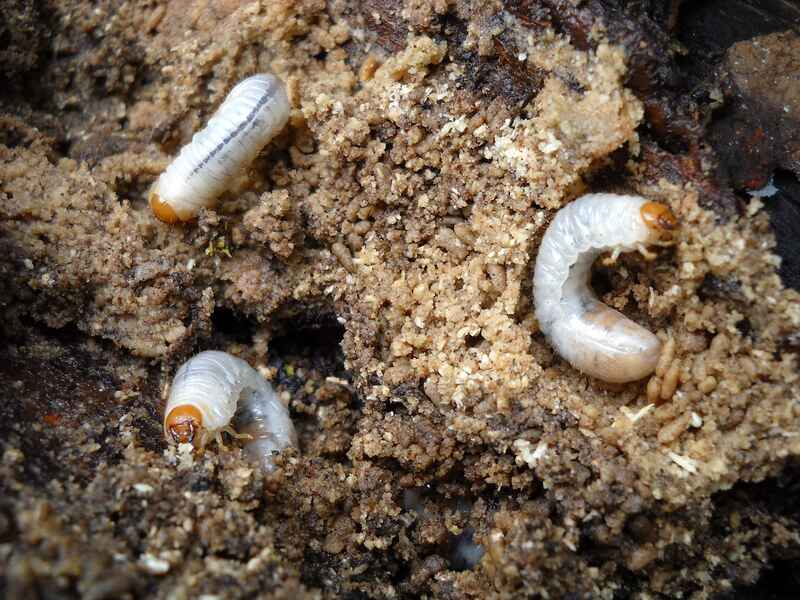
Grubs are the larvae of certain types of beetles and can cause damage to your lawn by feeding on the grass roots. If left unchecked, a grub infestation can quickly take hold, leading to unsightly brown patches in your lawn.
In addition to the damage caused by grubs themselves, they can also attract other animals, such as skunks and raccoons. These animals are known for digging and turning over patches of lawn in search of a meal of grubs, causing even more damage.
Pro Tip: To know whether you have a grub problem, cut a one-foot section of your lawn and peel it up. If there are more than ten grubs there, you have an infestation. Then, you can treat it with insecticides containing carbaryl and trichlorfon.
Aeration
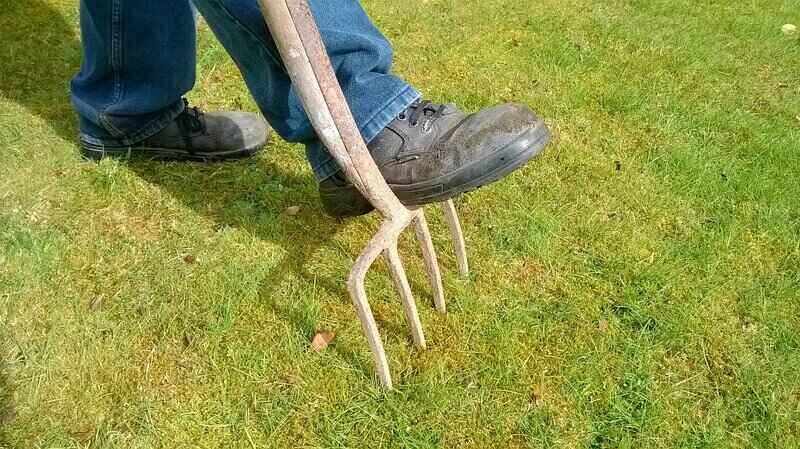
Aeration involves pulling small cores of soil from your lawn, allowing air, water, and nutrients to penetrate the soil and reach the roots of your grass.
Warning: Spring is not the best time to aerate in Wisconsin. Only do it if extremely necessary. Otherwise, wait to do it as part of your fall lawn care in Wisconsin.
While the best time to aerate cool-season grasses like those found in Wisconsin is typically in the fall, spring aerating can also be necessary in certain situations. For example, if you notice heavy signs of compacted soil, such as water standing in pools on your lawn, it may be time to aerate.
Feed Your Lawn
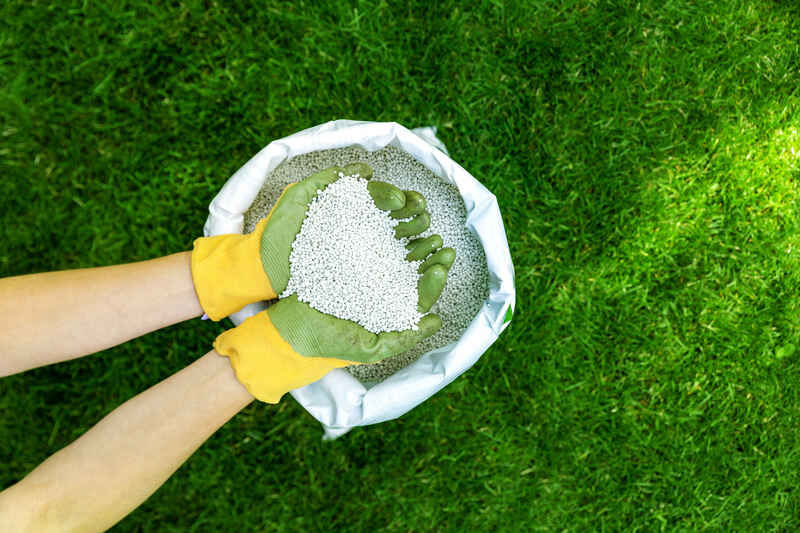
Fertilizing your lawn is essential to keeping it healthy and looking great throughout the year. In Wisconsin, you can apply a slow-release fertilizer once during the fall, the active growing season for cool-season grasses. Alternatively, you can split your fertilizer application with a heavier application in the fall and a lighter one in the spring.
Wait until temperatures are consistently in the 60s during the day and your lawn has already greened up. This typically happens in mid to late May, around Memorial Day.
Pro Tip: Before applying fertilizer, it’s a good idea to perform a soil test to determine which nutrients your lawn needs. A soil test will help you tailor your fertilizer application to the specific needs of your lawn, ensuring that it gets the nutrients it needs to thrive.
Apply Post-Emergent Herbicides
Weeds popping out of the ground can be a frustrating and unsightly problem for homeowners who take pride in their lawn. But don’t worry, applying post-emergent herbicide in late spring can be an effective way to treat broadleaf weeds that may have survived your pre-emergent herbicide application in April.
Post-emergent herbicides effectively eliminate weeds that have already sprouted from the ground and invaded your turfgrass, unlike pre-emergent herbicides that prevent weed seeds from germinating.
Warning: Use these herbicides responsibly and always follow the manufacturer’s instructions so you don’t end up killing your lawn instead of the weeds.
FAQ About Spring Lawn Care in Wisconsin
To get rid of weeds in your Wisconsin lawn, apply pre-emergent herbicides in spring to stop weed seeds from germinating and post-emergent herbicides in late spring to eliminate any weeds that have already sprouted.
You can also hand-pull any remaining weeds to prevent them from spreading. And don’t forget to keep your lawn healthy through regular watering, mowing, and fertilizing to prevent weeds from taking hold.
The best time to remove thatch from your lawn is in the fall. Dethatching removes built-up layers of dead grass, leaves, and other organic material that accumulate on your lawn over time. By dethatching in the fall, you can remove this buildup before the winter months, which can help prevent snow mold and other winter lawn diseases.
Most lawns in Wisconsin have cool-season grasses that have their strongest growing season during the fall. As a result, it’s generally best to aerate in the fall. However, if your soil is highly compacted, aerating in the spring can help loosen the soil and promote better air and water circulation to your lawn’s roots.
Bring in the Pros
Looking for a Wisconsin lawn care pro near you? Look no further! We have trusted lawn care professionals in Milwaukee, Madison, Green Bay, and many more cities across the Badger State.
Main Image Credit: David Berkowitz / Flickr / CC BY 2.0